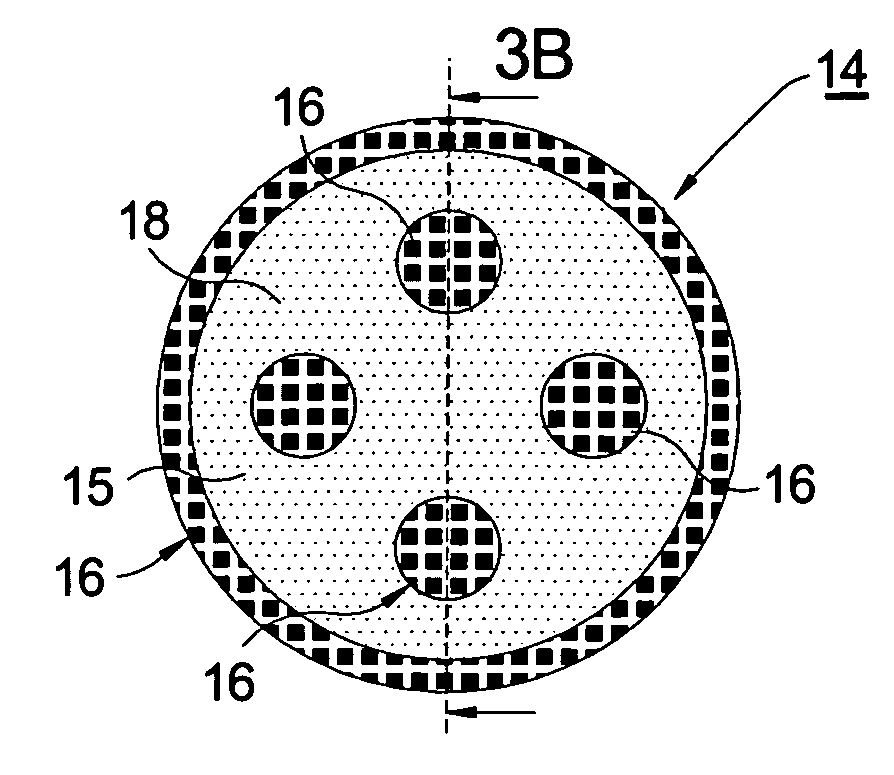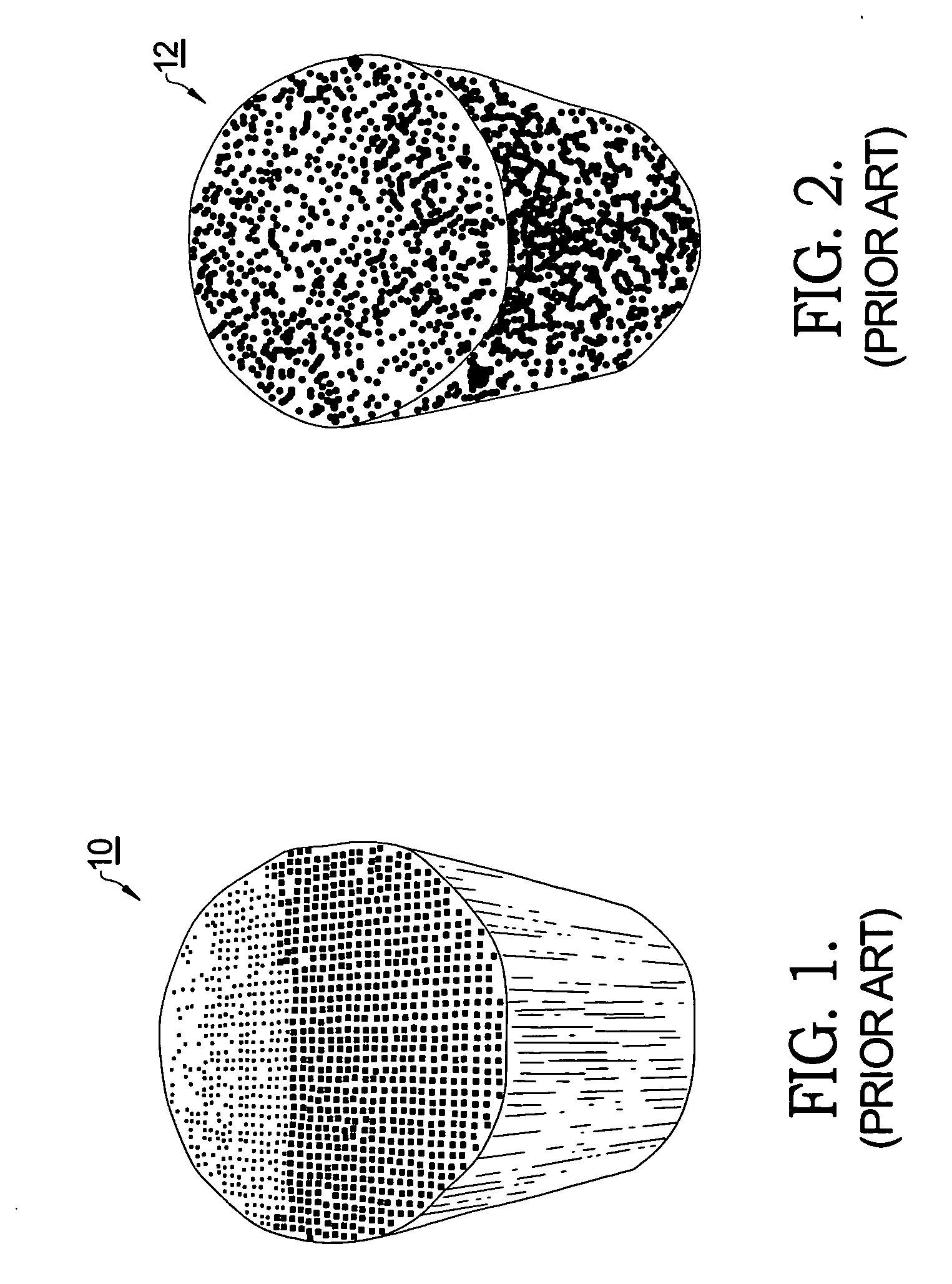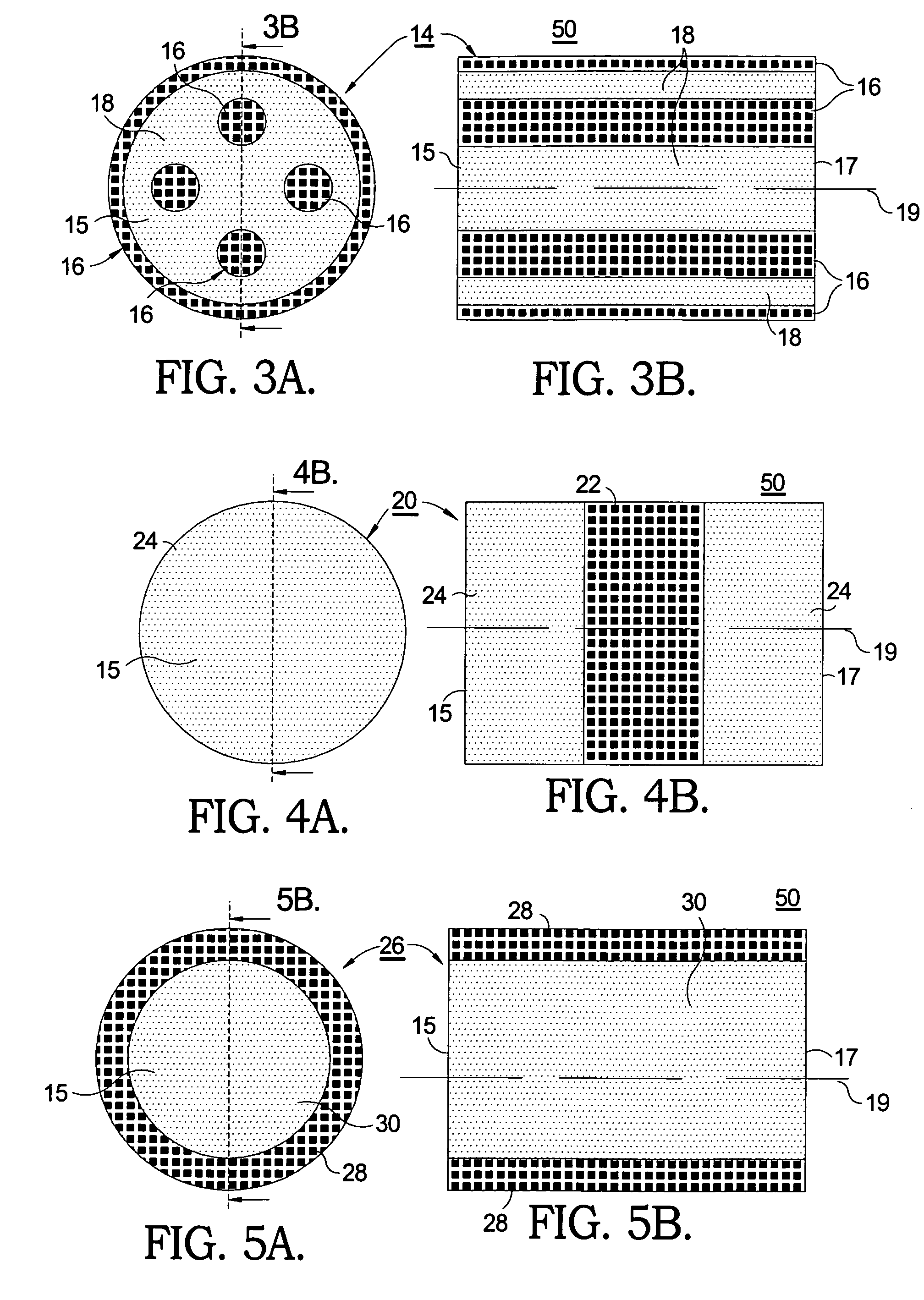Hydrocarbon reformer substrate having a graded structure for thermal control
a hydrocarbon reformer and substrate technology, applied in the direction of machines/engines, chemical/physical processes, bulk chemical production, etc., can solve the problems of significant rewarming period, limited capacity of nox traps, and poor performance of fuel-cell reformers for this purpose, so as to reduce conductive and radiated heat loss, high thermal capacity, and high thermal mass
- Summary
- Abstract
- Description
- Claims
- Application Information
AI Technical Summary
Benefits of technology
Problems solved by technology
Method used
Image
Examples
Embodiment Construction
[0020]Several morphologies are currently used for a substrate supporting a reforming catalyst in fuel reforming processes and also in other catalyst applications. Substrates are used as carriers for catalyst-bearing washcoats, which consist of catalytically active metals dispersed on supports. The substrates serve as washcoat carriers; as means to provide contact between a flowing reactant stream and the washcoat; as means to transport heat via conductive mechanisms through different portions of the substrate; as means to transport reactants and products in and out of the reactor; and other functions. Provided that the substrate is composed of material durable to the intended use, substrates can be in several forms—pellets, powders, foils, foams, or monoliths. Typically, substrate monoliths are in the form of honeycombs or rigid reticulated foams. A honeycomb monolith consists of regular, parallel, open channels or cells running the length of the substrate, while a rigid reticulated...
PUM
| Property | Measurement | Unit |
|---|---|---|
| Pore size | aaaaa | aaaaa |
| Pore size | aaaaa | aaaaa |
| Percent by mass | aaaaa | aaaaa |
Abstract
Description
Claims
Application Information
 Login to View More
Login to View More - R&D
- Intellectual Property
- Life Sciences
- Materials
- Tech Scout
- Unparalleled Data Quality
- Higher Quality Content
- 60% Fewer Hallucinations
Browse by: Latest US Patents, China's latest patents, Technical Efficacy Thesaurus, Application Domain, Technology Topic, Popular Technical Reports.
© 2025 PatSnap. All rights reserved.Legal|Privacy policy|Modern Slavery Act Transparency Statement|Sitemap|About US| Contact US: help@patsnap.com



